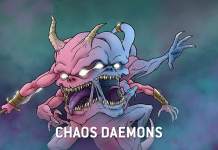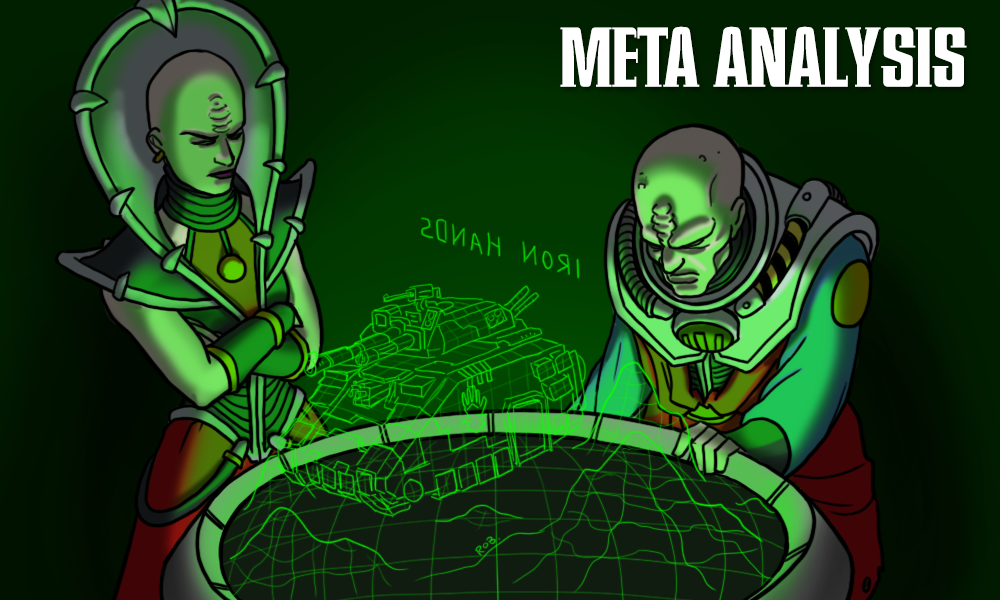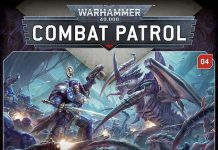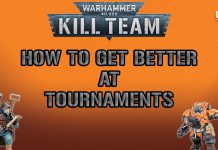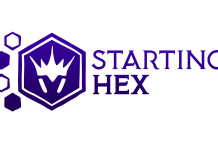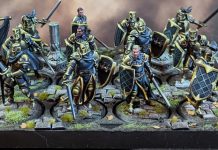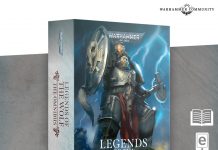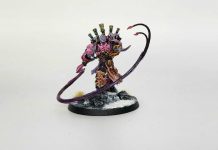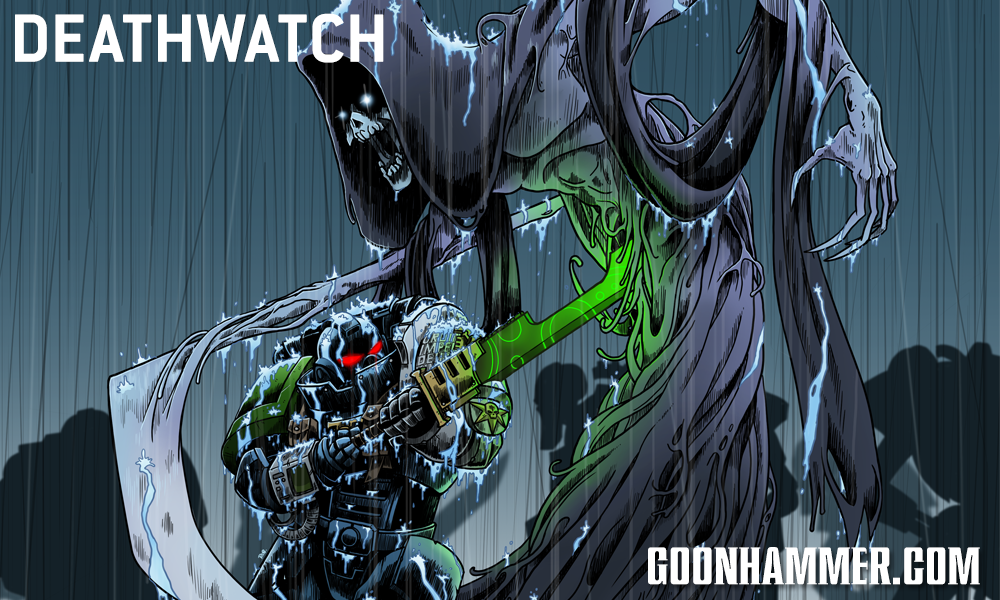It’s the Imperium’s turn for a faction focus, and today Stat Check‘s Innes Wilson (also captain of the Scottish WTC team) joins ups to take a look at Deathwatch. Innes is well known for his love of blowing stuff up with Space Marine shooting, so let’s find out how Deathwatch deliver on that particular front.
Deathwatch are an oddity in the Space Marines design space – in editions past they have had a strong focus on anti-Xenos rules, special ammunition boosting baseline squads to new heights and combined infantry units. All of these return in force for the 10th Edition Index, with some incredible flexibility and options presented for the faction.
Why Should You Play Deathwatch?
If you are a fan of having lots of options in your arsenal, as well as some incredibly potent damage buffs, Deathwatch provides the tool kit. When combined with the base marine units and the various powerful options there like Oath of Moment (allowing you to reroll all hits and wounds vs a target each turn), Deathwatch allows the canny player to make the most of every one of them.
Deathwatch also has the advantage of being the best non-Gladius Task Force option for Space Marines based on early results, and feels the least like a re-skinned Ultramarine. This helps differentiate them from the rest of the pack, with unique stratagems and enhancements to juice up your play.
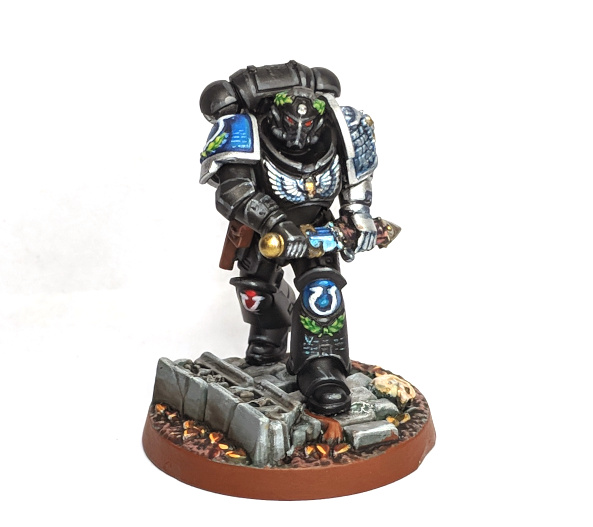
Five Things You Need To Know to Play Deathwatch
- Kill Teams and how to abuse them: Almost all the best units for dealing damage in the Deathwatch Faction share the Kill Team keyword, which allows them to double up on stratagem usage. From the baseline Deathwatch Veterans squad to the monstrous Proteus and Indomitor Kill Teams, there’s something here for every role.
- Mission Tactics make every turn a go turn: With a turn each of Sustained Hits 1, Lethal Hits, and the little cousin Precision on a Critical Hit, you can have two incredibly high damage turns that make other marine armies pale in comparison. While Combat Doctrines add flexibility and reach, they cannot match the destructive force of Mission Tactics
- You’re probably going to get to hit things in melee a lot: The Deathwatch Thunder Hammer is an incredibly potent weapon, providing the Deathwatch Veterans Squad 12 attacks at 10/2/3 with Devastating Wounds and plenty of reroll access. This unit will typically also be armed with ranged weapons, and doesn’t have a lot of resilience or ability to fall back and shoot. The same is true for the Proteus Kill Team and its Terminator Models. Leveraging your melee output has a lot of tension. Knowing when to go in, and when to play at maximum range will make or break plenty of games.
- The Teleportarium Beckons: At the end of any of your opponent’s turns for 1CP, one Infantry unit, or two Kill Team units can return to reserve. Arriving anywhere outside 9” of your opponent in your following Movement Phase, this is a level of mobility that few armies can match.
- Oath of Moment is a limited use resource, not an army wide buff: Only so many units in your army can have Oath of Moment be part of their plan. It’s unlikely that many games can be won only dealing with 5 units (or 6 with Tome of Ectoclades), and at some point you need a plan that doesn’t involve it to deal damage. Do not think of every unit through the lens of Oath of Moment.
Must Have Deathwatch Units
Deathwatch Units fall into a few categories, Support Units, Characters, and Damage Dealers. It’s important in any list to have a mix of everything in a list, for as good as your damage dealers can be, they don’t hold ground very well, and they rarely want to take a turn off to score a mission action or similar.
Damage Dealers
These units are your bread and butter. The goal is to be strong enough to work without Oath of Moment, and to become monstrous when given it.
Deathwatch Veterans: Typically armed with 4 Frag Cannons, 4 Deathwatch Thunder Hammers and two Astartes Shields for some resilience (2/2/1 in a 5 man squad), this battleline unit is the starting point for most Deathwatch lists. It has the Kill Team keyword, and provides itself innate rerolls of 1 (all vs Xenos armies), which allows it to function as an independent fighter with some stratagem support, or go all the way with combined shooting and melee output. Being able to solve your own failed shooting attempts and closing the damage output with melee is very useful. Notably this is a very fragile unit, but at just 20ppm, it’s not too bad when they take damage as you can choose to lose the 6 ablative models (either the hammers, or the frags depending on what the role you need for them next turn is) before you start losing effective output in a single phase.
Proteus Kill Teams: for 33PPM, we can solve the resilience problem, adding in 4 terminators (3 Assault Cannons/Power Fist and 1 Thunder Hammer and Storm Shield) and a Bike to the squad. Typically keeping the 4 Frag Cannons and 1 Deathwatch Thunder Hammer. This unit loses battle line and a point of OC, and trades in its rerolls for +1 to hit vs units above half strength. This synergises a little better with Oath of Moment, and adds some much needed resilience to the squad, at the expense of a heavy points premium. The bike and its 14” move adds a decent amount of shenanigans to the squad with its ability to push a little further and reduce charges.
Desolation Squads: It’s Space Marines, did you think you were going to get away from the unit that a good balance dataslate can’t keep down? Oath of Moment provides this unit with an obnoxious amount of damage, and access to stratagems like Hellfire Rounds for Anti-Infantry 2+. Extended Range and AP from Kraken Rounds, or the ability to teleport into line of sight with Teleportarium makes this unit as dangerous here as ever it was elsewhere. Add on mission tactics and you have a unit you’d be hard pressed to ever leave home without.
There are other damage dealing units that have shown up in lists, such as Sternguard Veterans, and Indomitor Kill Teams that are definitely worth considering, but have not shown to have the pedigree of the above. The Gladiator Lancer is the vehicle that has popped up the most, as the most reliable anti armour option available to the faction, and is definitely a unit to consider.
Wings: Small Eradicator units walking on from a board edge see use as well, as you can push their range out with Kraken Rounds to get the melta boost immediately.

Support Units
Not everything can be about direct damage – at some point you have to score some points too. That said, many of these units pull double duty. Either providing a buff to your various damage options, or by being right on the cusp where they can threaten other small units, and punch up significantly when under specific conditions like Oath of Moment.
Inceptors: Being able to arrive 3” away from the enemy is never going to be a weak rule, just look at the Trygon. With either Plasma or Bolters, the humble Inceptor is capable of trading with lone operatives and various other small units through their Twin-Linked rule. All of this while scoring an egregious number of points on secondaries and primaries by arriving in places where your opponent just can’t stop you. Always be aware of the option of Rapid Ingressing these in, they can come in 3” away there too and have the movement to take full advantage.
Land Speeder: The humble Land Speeder provides a movement 14, and offers a very useful buff of Ignore Cover and +1 to hit for blast weapons vs a visible target to the Speeder. This combines very well with the BS4 of the Frag Cannon, and the Castellan/Vengor Launchers equipped by Desolation Marines
Storm Speeder Thunderstrike and Hailstrike: The two best Storm Speeders provide a very similar role, handing out +1 to wound vs Vehicles and Monsters, and +1 AP respectively to a unit hit by the Storm Speeder. At 160/130 points they’re definitely premium units, but having some fast and fairly resilient units that can turbo up your damage while doing some themselves is obviously very helpful
Infiltrators: In an environment where Genestealer Cults are running rampant and terrain is heavy, being able to block off space for reinforcements is at as much a premium as ever. With infiltrate and a 12” aura of deep strike denial, Infiltrators give you the space you need to get ahead in game.
Rhino: Everyone knows what a Rhino does at this point, right? Sometimes you just want a metal box to provide some easy movement for your short ranged Frag Cannons, or to protect your squishy Tactical Marine equivalents from fire while they get up the board. They’re not cheap, but they do the job and can always run around grabbing objectives or tagging things into combat once you get into the later stages of the game.
There are many other units across the marine arsenal, the humble Whirlwind shows up with reasonable frequency, Vanguard Veterans and Eradicators fit in here as well as units that have a support role while not being overly expensive that you feel like you must be using them. Of note, if you are playing Gladius Deathwatch, Scouts and Scout Snipers are a very viable option, but their use is prohibited in the Black Spear Task Force.
Characters
In many armies, characters are the icing on the cake that takes a bad unit to good, or a medium unit to great, and Deathwatch is no exception. It’s very tempting to take a character for every unit, but at the 80-100pt mark it’s dangerous to go too far into all toys, no boys. Always weigh up if buffing a unit is better than just having another.
This section will also cover enhancements where relevant to the characters discussed.
Watch Master: The Watch Master provides his unit with the ability to Advance/Fall Back and Shoot/Charge. This is an incredible ability that increases the threat range of whatever unit he is in, and forces respect from your opponent. He himself is not awful in combat at 6 attacks 2+/6/1/d3 Lance, and he affords you the ability (if your Warlord) to increase the cost of a stratagem by 1 for your opponent after use. At a fairly expensive 115 points, and being less useful in multiples due to the Warlord Restriction on his “Vect” ability, expect to want and use 1.
This Character is a natural holder for the Tome of Ectoclades Relic that allows a once per game second Oath of Moment use, making the turn that you go in much more powerful. The bearer must be on the board to use this ability, which has some tension with the Teleportarium Stratagem, so the Watch Master naturally holds it well due to their likeliness of being on the board as they are faster than any other units thanks to Advance and Shoot/Charge. This works especially well with the Bike typically brought in a Proteus Kill Team, but don’t underestimate the reach anywhere.
Captain: The Captain provides an additional use of stratagems, and carries an enhancement well. With the ability to use many stratagems on 2 units for 1CP, the captain can then re-use that stratagem for 0, allowing 3 units to gain the benefit, and works well backing up that third squad. Thief of Secrets might just be the best damage increasing enhancement in the game, adding 1 to S/AP/Damage, and an additional 1 of each after killing a model. Combined with the Captains Finest Hour ability, there is a potential for up to 10 Attacks at 7/4/3 with Twin Linked and Devastating wounds once per game.
Beacon Angelis is the second go to Enhancement in this role, providing Deep Strike and a 0CP Rapid Ingress to his unit. The power of this cannot be overstated, allowing you to bring units anywhere on the board to score primary, take control of areas and bring devastating damage to bear.
Librarian: The Librarian is the resilience option of the above, providing a 4+ Invulnerable save instead of free Stratagem Usage. Depending on the unit’s role in the list, this can be just as powerful and adds a lot of staying power when taking objectives. Beacon Angelis is just as good here as it is with the Captain.
Other Characters are certainly viable, the Librarian in Phobos Armour provides Lone Operative access by making an infiltrator unit untargetable, which is great in an army that lacks scouts, while the Lieutenant with Combi-Bolter is a Lone Operative to himself. The Captain in Gravis Armour pairs very well with Indomitor Kill Teams and has the highest output when combined with Thief of Secrets. The Apothecary Biologis is also very potent with the output of the Indomitors. If Primaris Units like Sternguard are on your mind, the Primaris Captain and Librarian match the roles of the Firstborn just fine.
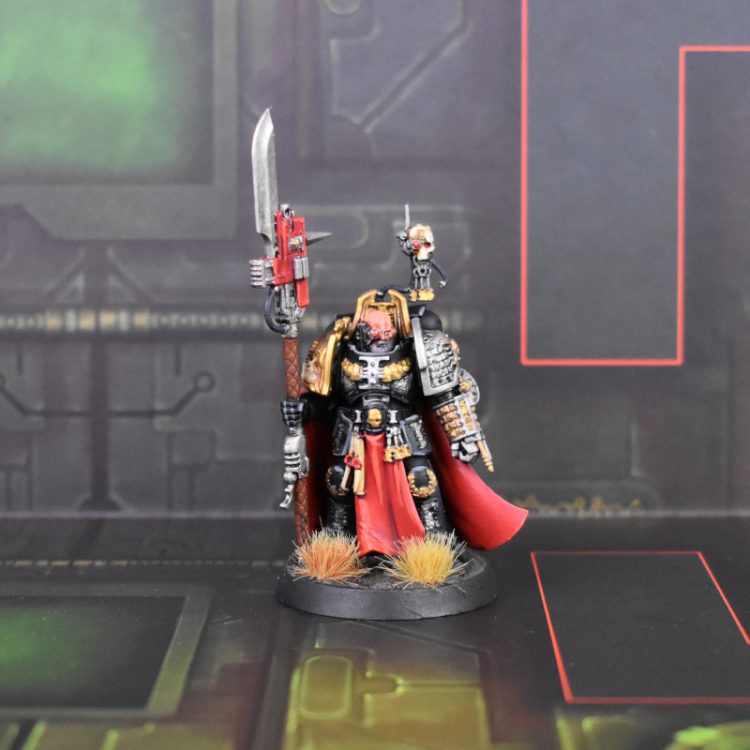
Overall, there are a lot of units available to the Deathwatch, and the ones you choose will have a cascading effect on how your list plays and what other tools you like. Frag Cannons want Land Speeders, while Assault Cannons (on Proteus Kill Teams) will prefer the Hailstrike.
How to Score Points with Deathwatch
Deathwatch are a marine army, and they inherit the problems of Space Marines when it comes to putting models on objectives and expecting them to stay there. Your deployment zone objective is usually safe with Desolation Marines, but No Mans Land tends to be a wholly different problem. The usual approach is to put small infiltrating units like the aptly named Infiltrators onto the safer neutral objectives and then allowing your opponent to pressure you and take an early lead. At this point, while focussing on damage dealing while you have the most available to make use of Oath of Moment, you can remove their scoring assets while setting up your second wave to take over that control in the late game.
By threatening any approach to your own advancing wave of objective units by way of Desolation Marine or the possibility of an Advance and Charge from the Watch Master’s squad or a reserve unit appearing to remove any unsupported threats, you can then build up your primary through the mid game to take the lead on the final scoreboard.
A more Proteus Kill Team based army can use the durability of terminators to avoid some of these initial problems, using Cover and the Armour of Contempt stratagem to reduce incoming damage, there is a significant amount more staying power available. In the current game environment however, this is not always quite enough, which leaves the normal plan as a fall back.
For your secondary plan, Deathwatch will typically run many units that are happy to skirt the edges of the board to score secondaries like Engage on all Fronts or Investigate Signals. Coupled with the mid-board brawling of the various Kill Teams for the more active objectives like No Prisoners, Capture Enemy Outpost et al, if an appropriate mix of units is in your list, tactical secondaries come fairly naturally during standard play.
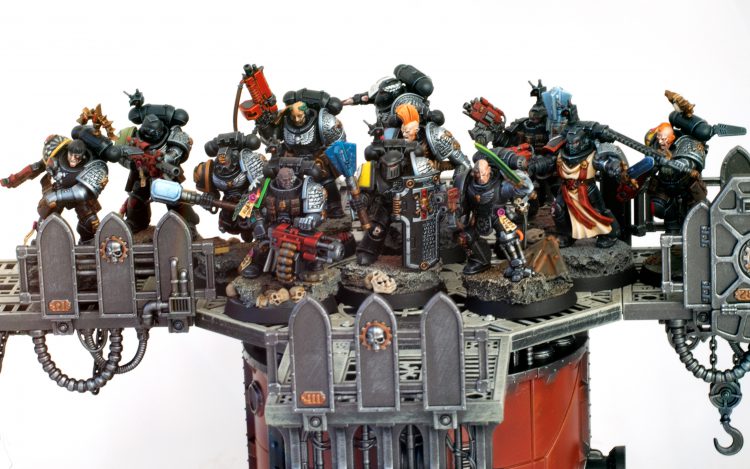
How does Deathwatch deal damage?
There are a few core combinations for Deathwatch, that usually revolve around combining multiple overlapping buffs to make any unit do an absurd amount of damage in the right situation.
The most important of those are Hellfire Rounds and Kraken Rounds, two stratagems that have the aforementioned “1 Infantry or 2 Kill Teams for 1CP” ability. Hellfire Rounds confer Anti-Infantry 2+/Anti-Monster 5+ (not for Weapons with Devastating Wounds, sorry Sternguard Sickos), and Kraken Rounds confer +1AP and +6” Range.
Kill Teams both the Deathwatch Veterans and Proteus stripe are typically armed with 4 Frag Cannons. These are a heavy weapon with 18” range, BS4, S7/AP1/D2, D3 shots, Rapid Fire D3 and Blast. In real terms, what that means is that they do absolutely anything you want them to with the appropriate support.
With Kraken Rounds, they hit the magic AP2 that mulches soft infantry and puts bigger units onto their Invulnerable Save, while also becoming 24” range, allowing them to Rapid Fire at 12” which means they can use it from Deep Strike. With Hellfire Rounds they wound Lychguard or Allarus Terminators on 2s. With a Land Speeder, they hit on 3s and ignore cover. With Oath of Moment and Mission Tactics they can reroll hits and have Sustained Hits 1 or Lethal Hits. Blast means that even 20 man infantry squads aren’t safe. Storm Speeders can then improve this again. The only limit to this output is your imagination and the support that you have opted to put in your list.
The other weapons in these squads (mostly Assault Cannons in Proteus Kill Teams) also benefit from many of these output increases, creating disgusting amounts of synergy and overlap from all angles of the Deathwatch Army.
Did any of those buffs sound like they’d be good on Desolation Marines? That’s hardly surprising. Range Extensions and Additional AP or Anti-Infantry 2+ resolve most of the issues that unit has, and turn them into truly a take all comers threat.
Add to this the volume of melee that can be available through the aforementioned Deathwatch Thunder Hammers, or Power Fists on the Proteus Kill Team, and there aren’t many targets that can’t be brought down given an even game.
The biggest issue with this output is that it is limited in range (mostly operating in the 18-24” band, or melee), and requires this support to fully hit its heights. The difference between 4 Frag Cannons with Mission Tactics, Oath of Moment, Kraken Rounds, and any given Land/Storm Speeder buff (which sounds like a lot of overlapping effects but is actually a fairly normal play pattern) and one without those is absolutely night and day. It’s on you as a player to deliver the units in the correct places, mitigate the incoming return damage and overlap your buffs appropriately to kill, but not waste resources. If that sounds complicated, it is. But with a bit of experience, Deathwatch is an army you can make sing under the right circumstances and feels unstoppable.
Teleportation. Jank. Massive damage output when you set it up right. Terrifying fail conditions when it all falls apart and your T4 3+ save models are left holding the bag to galvanise you to improve for next time? Deathwatch has it all in spades, and more.
Is killing vehicles a struggle? Sure. Is it a little complicated to sequence? Also yes. Is it worth it? Absolutely.
Sample List
Below is an example list that applies many of these ideas and concepts to try and offer as many tools to play the mission and deal damage as possible:
Deathwatch - Black Spear Task Force
Closing Thoughts:
Deathwatch is a super enjoyable and very flexible army that has options in all phases of the game and a lot of room for player skill expression that makes it very dynamic.
If you’re looking for a challenge that will force you to manage resources well and give you room to grow as a player, consider Deathwatch.
Thanks for joining us Innes, and I consider myself suitably terrified to face Deathwatch on the table with my “poor”, “defenceless” Necrons. Make sure to check out Stat Check, wish Team Scotland good luck in the WTC, and we’ll see you tomorrow for more Faction Focus goodness.

